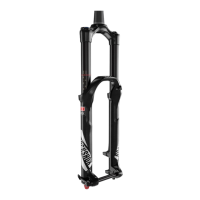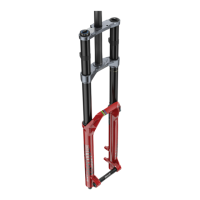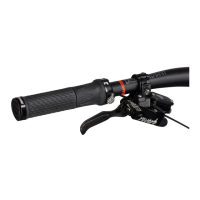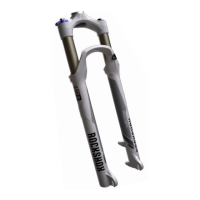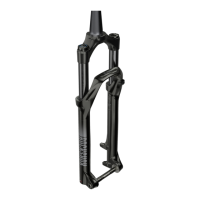5
Suspension sag can be used to set the proper suspension spring rate.
Sag is the amount of travel, measured as a percentage of full travel, that the
suspension compresses when the rider, including gear, is on the bicycle in
the normal riding position. Setting the correct sag allows the suspension to
actuate effectively and efficiently.
• More sag (20% - 30%) increases bump sensitivity and suspension
movement. More bump sensitivity results in a smoother ride and is
typically preferred on longer travel bicycles.
• Less sag (10% - 20%) decreases bump sensitivity and suspension
movement. Less bump sensitivity results in a more firm, efficient ride and
is typically preferred on shorter travel bicycles.
Air pressure recommendations on the back of your fork, or at
www.rockshox.com/app, are suggested for initial spring setup. After sag is
set, your fork's optimal air pressure may differ based on fork travel, bicycle
geometry, and rider preference.
Important - Sag must be set before making any damping adjustments.
Many RockShox® forks include sag percentage gradients and a sag o-ring
on one of the upper tubes.
If a sag o-ring is not on your fork, install a plastic cable tie around the upper
tube just tight enough so it does not slide down the upper tube. Remove the
cable tie before riding.
If your fork does not have sag percentage gradients, multiply the target sag
percentage by the total amount of suspension fork travel. Use a ruler to
measure the length of exposed upper tube above the dust wiper seal to the
sag o-ring.
If your fork's travel is unknown, before sag is measured, fully compress
the fork to bottom out. Release and use a ruler to measure the length of
exposed upper tube below the sag o-ring.
Set Sag

